Before starting work on this project, I considered several different isomorphic layouts
- Harmonic Table Layout
- Wicki-Hayden Layout
- All Fourths Layout
- Janko Layout
Below I show the layouts and major/minor chords of each and my reasons for not choosing them.
Harmonic Table Layout:
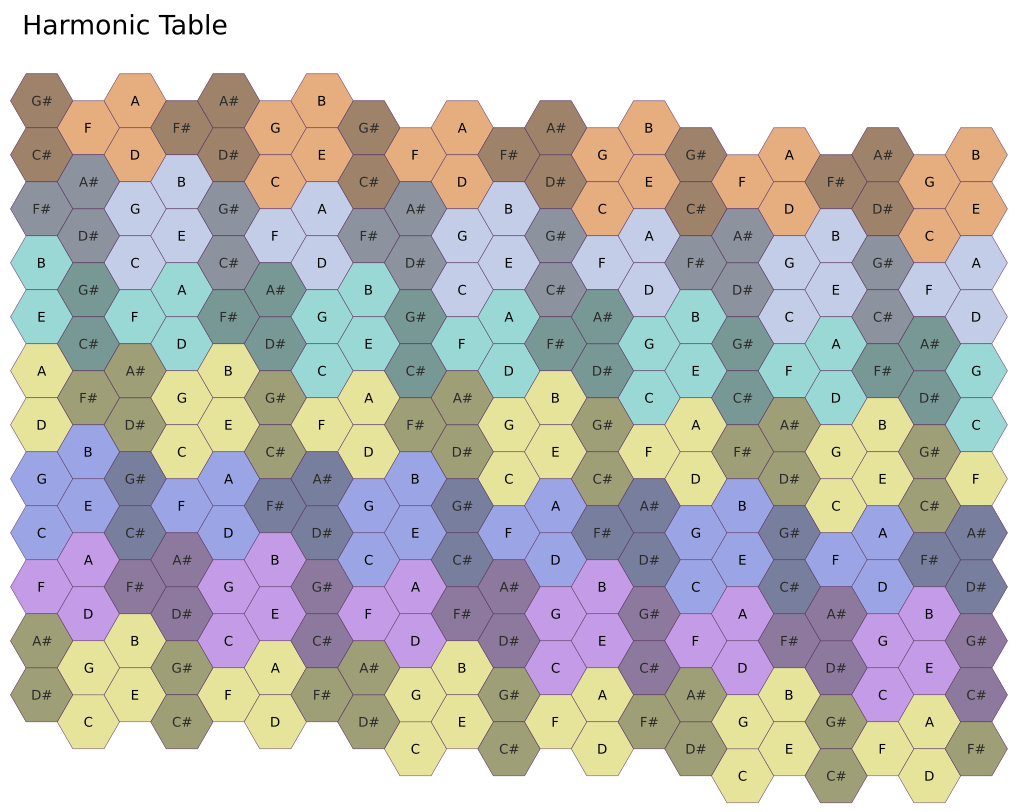
Specifications:
- 7 Octaves
- 252 keys : 84 notes -> 3 keys : 1 note
Chords:
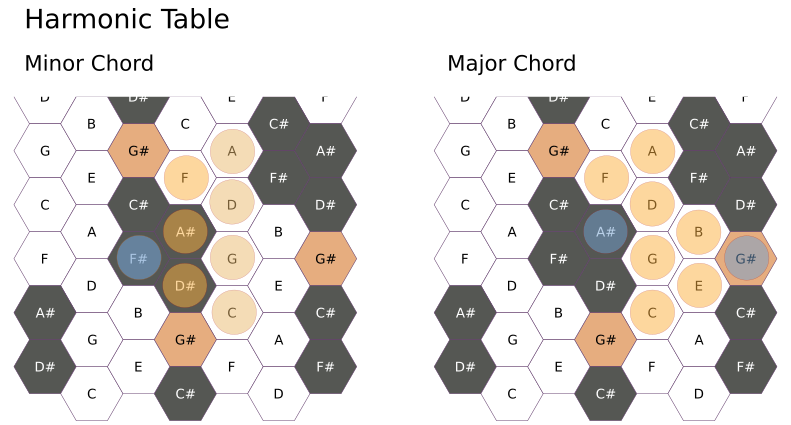
[Blue coloured indicate alternative keys to change the type of chord - e.g. Diminished chord by using F# instead of G]
- Hexagonal keys allows for chords to be played with fewer fingers
- All key caps would have to be custom made
- Vertical chord patters did not seem very comfortable to play
This was my initial choice for a layout, but at 252 keys, I very quickly became apparent that the weight of the switches alone would be too much.
There was a commercially available keyboard using this layout called the Axis-64 by C-thru, but it has now been discontinued.
Wicki-Hayden Layout:
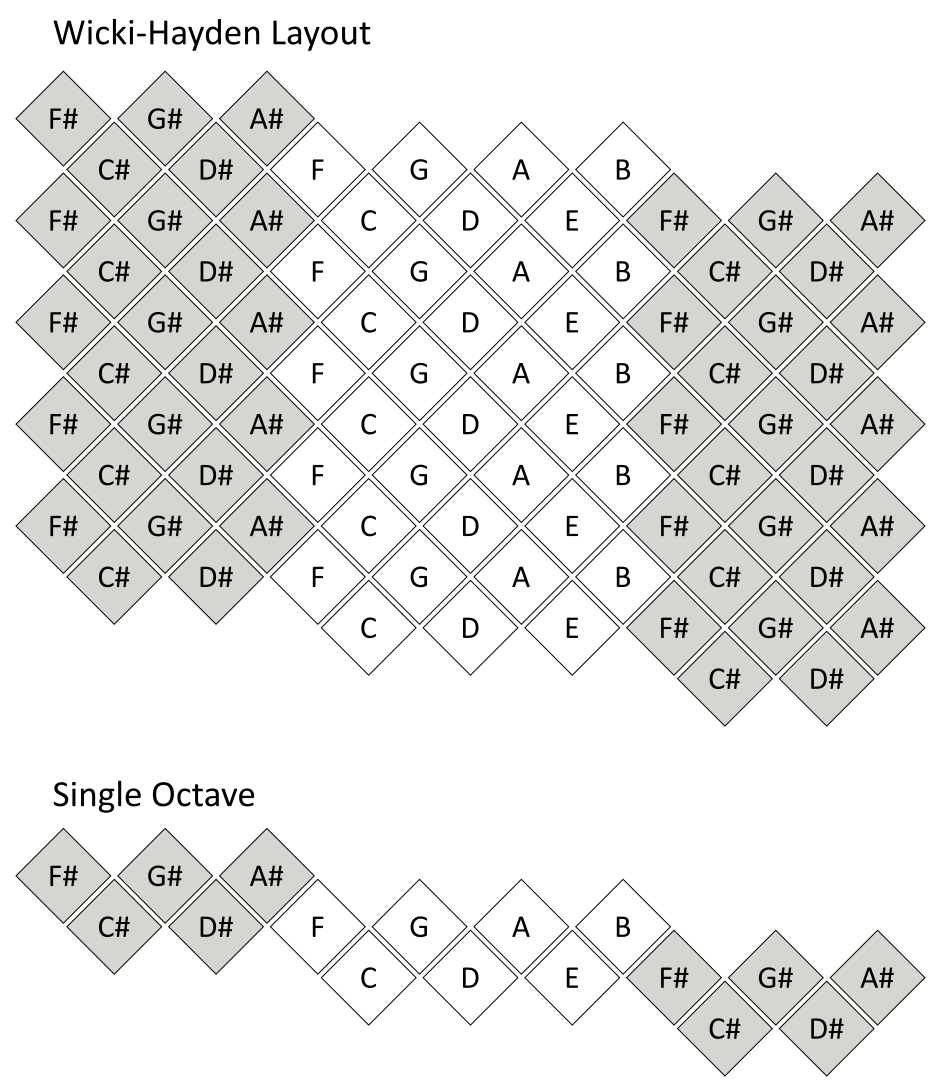
[Note columns of sharps on left are repeated on the right]
There are two general configurations:
- One tall keyboard - with the hands one above the other
- Two split keyboards - each hand has its own keyboard.
Chords:
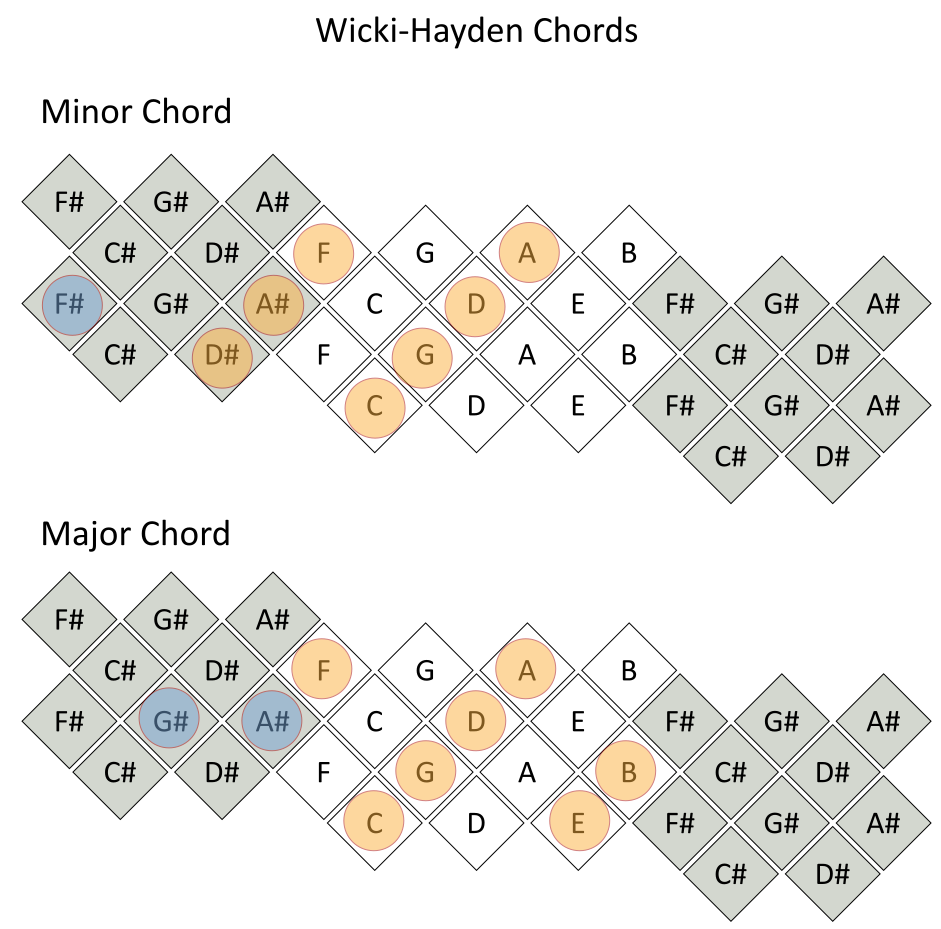
I find these chord shapes really uncomfortable (especially the blue modifiers) - this is the deal breaker for this layout.
All Fourths Layout:
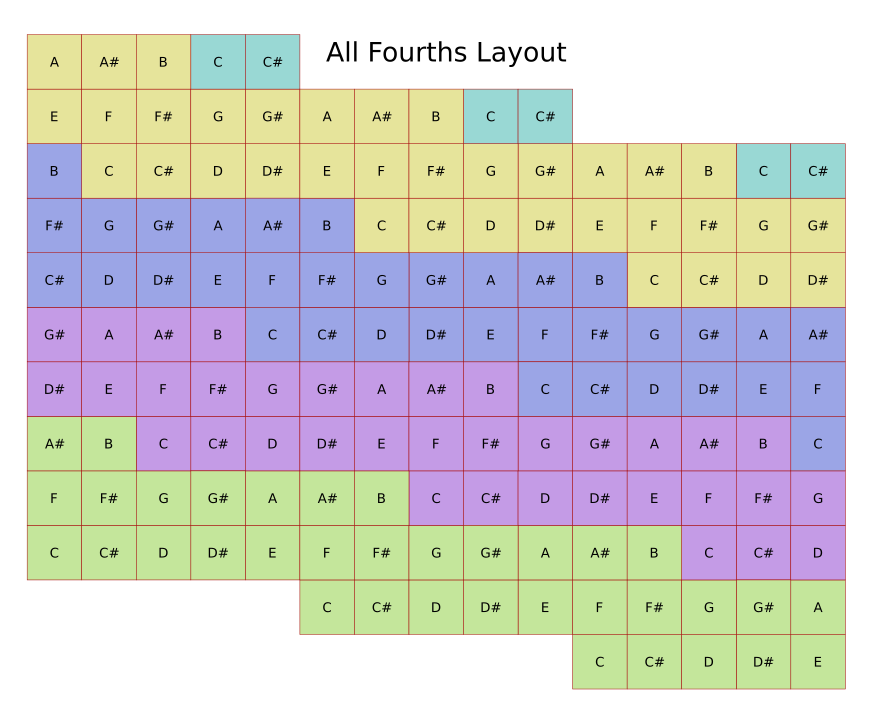
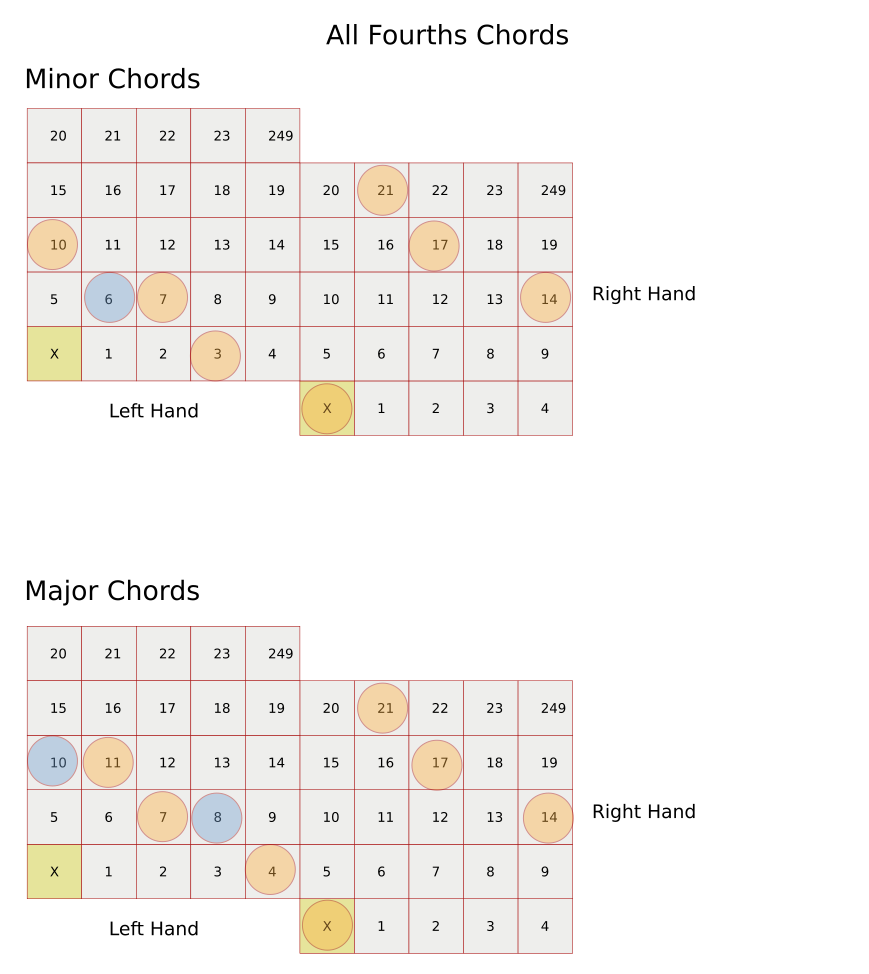
Specifications:
- 150 keys : 50 notes -> 3 keys : 1 note
- 4 Octaves
The All Fourths was a strong contender, but it's few octaves and large number of buttons were against it.
Janko:

[image from wikipedia]
For me the Janko is not suitable for several reasons
- Just as long and as heavy as a regular piano keyboard
- The chord shapes are not very pleasant for my hands
Janko keyboards are currently in production branded as Chromatone - https://chromatone.jp/
 Redgeneral
Redgeneral
Discussions
Become a Hackaday.io Member
Create an account to leave a comment. Already have an account? Log In.